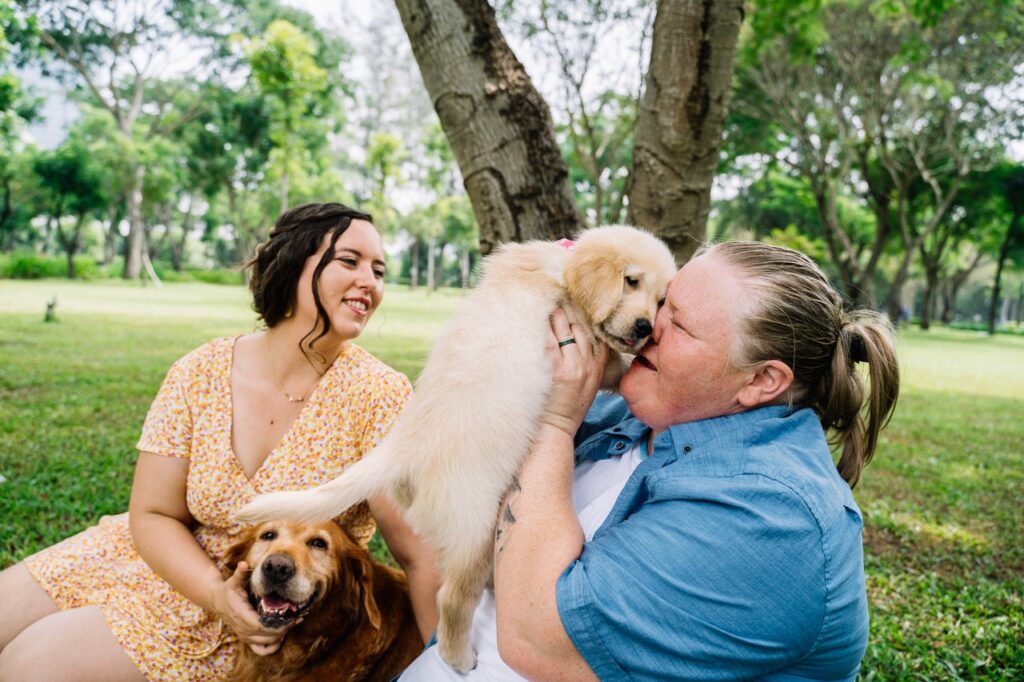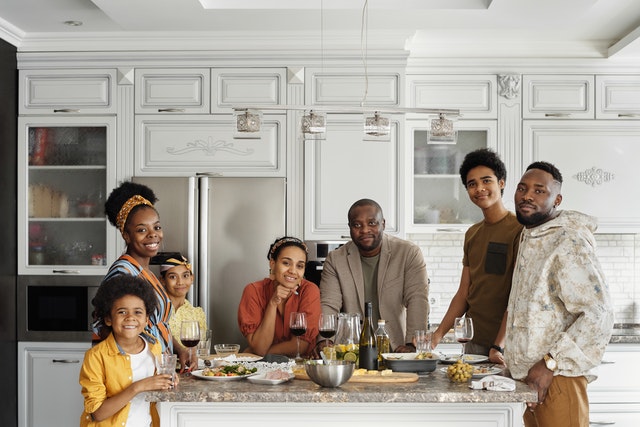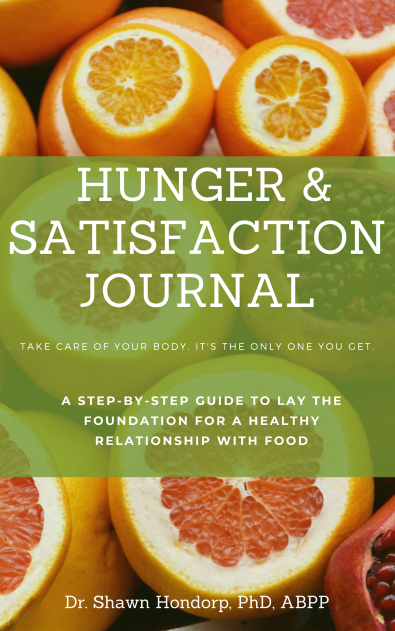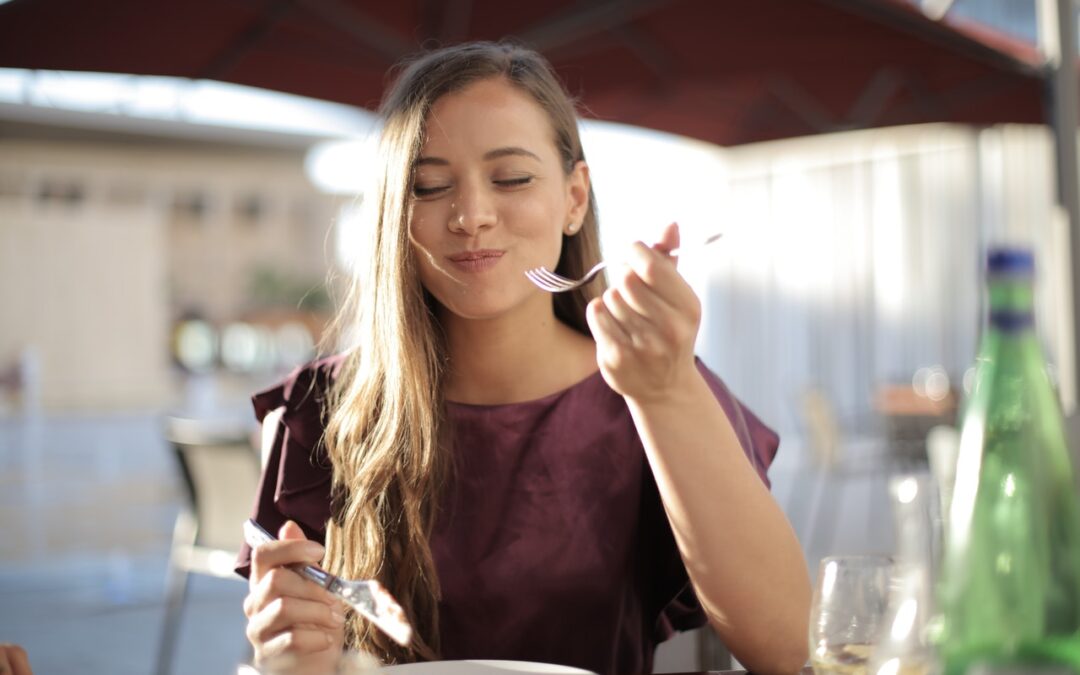Do you feel anxiety or a lack of confidence in your relationship with food? Have you ever heard of exposure therapy?
If your answer is yes and then no, you are in for a treat.
Exposure-based therapy treatment is an evidence-based approach that works well for many concerns, including but not limited to:
- History of traumatic experiences and/or symptoms of post-traumatic stress disorder
- Obsessive-compulsive disorder
- Specific fears or phobias (fear of heights, snakes, or dogs)
- Panic attacks
- Other forms of anxiety, including eating related anxiety
- And many more
This average result varies depending on the presenting concern, but generally exposure therapy is extremely effective. Today, I will give an overview of exposure therapy with a focus on what we can learn from it in terms of improving our relationship with food. That is, how you can use it to improve binge eating, emotional eating, food cravings or addiction or other weight management related concerns.
Fear of Dogs
To look at an example of how exposure therapy works, lets discuss someone with a fear of dogs. The great news is, exposure therapy is very effective for specific fears like this (Wolitzky-Taylor et al., 2008). It takes effort and some discomfort but the odds are pretty good that you will be snuggling a dog after just a handful of targeted sessions.

How Exposure Therapy Works
In exposure therapy, you typically create what is called a fear hierarchy. This is a list of the detailed situations related to your fear and the level of anxiety it would cause (0 = no anxiety, 50 = moderate anxiety, 100 = the most anxiety possible).
Your list might look like this:
- Seeing a picture of a dog (15)
- A dog across the street on a leash (30)
- Small dog coming towards you on the same side of the street on a leash (50)
- Big dog coming towards you on the same side of the street on a leash (80)
- Small dog walking towards you unleashed (85)
- Large dog walking towards you unleashed (100)
Working Through the List
You might think you need to start at the bottom, but you can actually start wherever.
If you feel ready to tackle a higher anxiety situation, you will likely get quicker results. The idea is just that you plan exposures in at a pace you are comfortable with.
So, if you were feeling brave and wanted to tackle the fear all at once, we might set up an exposure for you where we found a very docile large dog and had it’s owner walk towards you on the same side of the street without a leash. Most likely you would feel very anxious as the dog and owner passed you (maybe 100), and gradually if you repeated the same situation again (had the owner start over and walk by you again) your fear would gradually get lower over time (maybe to 80, then 60, and so on).
Most likely, if we did that situation a few more times (this depends on the person), your fear would gradually get lower and lower at the peak. So maybe after 3 times you might only get to an 80 when you passed the dog, then 70, and so on.
How Often Does This Approach Reduce the Feared Situation
As I mentioned, exposure therapy for specific phobias works quite well. A meta-analysis (a study combining other studies – 33 of them in this case) showed large effects in favor of exposure therapy (Wolitzky-Taylor et al., 2008). There is evidence that our amygdala (part of our brain involved in the fear response) shows reduced activity after exposure therapy (Goossens et al., 2007).
Meaning, exposure works and the impact shows up in the form of changes in brain activity.
Mostly likely after a few sessions, we would have a person with greatly improved confidence who might no longer feel the need to jet across the street if they see a dog approaching. They are free to live their life as they wish, with an improved sense of freedom and confidence.
How Does Exposure Therapy Apply to Eating?
I’m so glad you asked.
If you have ever struggled with binge eating or weight loss, you might find yourself having a lot of anxiety about certain foods or food-related events.
Just some of the daily decisions about food might cause anxiety. For example, when someone brings donuts to work, drops off a batch up your favorite cookies.
In fact, some weight loss or food addiction programs promote avoidance of social events or entire food groups (sometimes in a pretty extreme way) as on option to try to reduce anxiety over food decisions and/or manage weight.
There is Another Way
If our goal is helping people feel confident and relaxed around food so they can make food-related decisions from a place of self-respect, avoidance is typically not a long-term solution and can often actually increase food anxiety.
For many people I talk to, they actually say “I wish food could just be fuel” but when you dig a little deeper, what they really want is to be able to enjoy food in moderation, but not feel limited in their life because of it.
For example, if they love traveling and trying new restaurants, they would ideally love to be able to do so without feeling that they need to restrict their eating, or feel on edge when out to eat due to lack of confidence in controlling their behavior.
There’s a huge loss in this. In my dieting days, it makes me incredibly sad thinking about all the anxiety I felt in anticipation of certain vacations or social gatherings. I would worry about trying to lose a certain amount of weight prior to the trip, or about how I was going to manage my “healthy eating plan” without looking weird to others.
This kept me stressed out and not focused on what really mattered: enjoying the place I was at or the people I was with.
The Role of Dieting
The dieting mindset can truly erode our confidence in eating choice, because it sets us up to feel deprived, and desire foods more. Making us feel more out of control and desperate for a solution.
For more detail, check out my posts on the biological and psychological reasons dieting backfires most of the time. For an alternative to dieting, check out my free resource to kickstart moving away from the diet mentality.
But the only way to improve confidence, is like our dog example above, gradually expose ourselves to the feared situation, but do so in a way that ensures we are safe and also set up for success.
That is, I don’t want you reading this and saying “well Shawn said to exposure myself to hard situations, so I’m going to buy all the foods I typically overeat on and keep them in my house.”
Creating Your Fear Hierarchy

Instead, I recommend creating you own hierarchy. List the situations related to food/exercise where you feel most out of control and least confident. For a comparison, write a few that you feel relatively good about or confident in. Your list might look like this:
- Eating well while at work (10 – very low anxiety/relative confidence for this one)
- Going out to dinner with my best friend (40) – can usually focus on the positive conversation and we will sometimes split a dessert and I’m able to enjoy it without guilt or feeling out of control
- Going out to dinner with my mom (60) – she sometimes makes me feel anxious or self-conscious about my weight and this sometimes leads me to want to eat past full
- Avoiding snacking while my husband is working late and I’m home alone after dinner (80)
- Not snacking while my husband is working late and I’m home alone after dinner AND I have ice cream in the house (90)
Real Life (“in Vivo”) versus Imaginal Exposures
There are two main different types of exposures:
- In vivo: This means you do the exposure in real life. You walk past the big dog off his leash, or you go to the social gathering with all your favorite dessert foods. Or you hang out alone at night watching TV after dinner.
- Imaginal: Just as it sounds, this is where you image the situation in your mind. This can be done by yourself (just closing your eyes and thinking through the situation) or can be guided by an audio or a written script.
Imaginal exposures are great to do before the real life exposures. Especially for food-related situations if social events are involved, it can be helpful to lay the groundwork for how you’d ideally like to think, feel and behave in that situation before you actually are in it.
Cultivate Confidence in Your Relationship With Food One Step at a Time

The following steps can be used to increase confidence in your relationship with food one situation at a time:
- Choose the item on you list. It does not matter where you start. You could do a lower number to build your confidence or start at the very time. Both are effective. Just decide where to start, and make sure you are going to set yourself up for success.
- Don’t approach this from a diet mentality. When it comes to food exposures, it’s extremely easy to fall back to a rigid/diet mentality. This is not helpful and won’t serve you long-term. Think of the situation that gives you anxiety related to food as just a skill you have not yet mastered. But you aren’t mastering dieting, you are mastering checking in with your body and making choices from a place of respecting yourself, not from restriction. So when you go to the buffet line with your plate, your goal is to not have the dessert (if that’s what you choose) not because it’s bad, but because you know you will feel tired and sluggish an hour later if you do. For additional guidance in leaving the diet mentality in the dust, check out my free Hunger & Satisfaction Journal here.
- Set yourself up for success. Control what you can to ensure you are successful, even if you are anxious. If you really hate going to work potlucks and it isn’t mandatory and won’t negatively impact your job, then you don’t need to go. However, if you really value the situation (either you want to go, or it would really help your career to go), then know that you can set up an exposure to increase your confidence. First consider how you want to feel and behave, and make sure you take other steps to make it easier on you (e.g., don’t go really hungry, have a plan for if you are tempted to eat past full). If you want to feel relaxed around food and engaged in the conversation, specifically consider what that would look and feel like and what steps you need to take to get there (e.g., really focusing on starting engaging conversations).
- Do an imaginal exposure first. It’s like a little warm up. A dress rehearsal if you will. The idea with exposures is that if it brings up the anxiety it typically would, that’s actually a good thing. So if you imagine yourself out to dinner with your mom when she makes a critical comment, and you feel anxious while imagining it, that’s actually a good thing. Make sure you imagine yourself how you’d like to feel instead, and most importantly how you would like to behave. Even if you feel anxious, imagine yourself putting down your fork if you notice yourself being tempted to keep eating after your are full. Imagine yourself thinking that you can handle this emotion, and that if you aren’t able to effectively assert yourself to your mom (maybe you’ve tried and she still keeps making the comments), remind yourself that you will call a friend when you leave the dinner and vent, instead of eating past full to cope.
How Can This Be Applied to Thanksgiving?

Although Thanksgiving might look different this year, you will likely have access to more food and more variety than usual. Before the meal, take a few minutes to do the following:
- Check in with your body and your stress level
- How are you feeling physically?
- Emotionally? What’s your level of stress from 1-10?
- Ask yourself how you want to feel after your Thanksgiving meal?
- Do you want to feel satisfied, calm?
- Full, but not completely overstuffed and sluggish?
- Think of one thing you can do to help yourself achieve that outcome?
- Maybe make a plan to have the vegetables first?
- Take a break mid-meal to check in with your body and your level of fullness?
- Focus on the conversation with your loved ones?
I recommend you use Thanksgiving this year as an opportunity to make eating choices from a place of respecting yourself and your body. Remember that restriction backfires, but keeping tempting foods out of the home or out of sight can be a way to help yourself feel great and focus on what matters.
Which Food Situation Gives You the Most Anxiety?
I’m always developing new free resources and new tools to help improve your relationship with food. Let me know which situations you struggle with most so I know where to focus when I develop new tools. Comment below or email me at info@drshawnhondorp.com!
Have you grabbed the Hunger & Satisfaction Journal Yet?

It’s a 3-day guide for people who are like, “Yeah Shawn, I’d love to stop calorie tracking and dieting and have a healthier relationship with food, but HOW?” Well, my friend you can get step by step guidance for how to start right here.
References
Goossens, L., Sunaert, S., Peeters, R., Griez, E., & Schruers, K. (2007). Amygdala hyperfunction in phobic fear normalizes after exposure. Biological Psychiatry, 62, 1119-1125.
Wolitzky-Taylor, K. B., Horowitz, J. D., Powers, M. B., & Telch, M. J. (2008). Psychological approaches in the treatment of specific phobias: A meta-analysis. Clinical Psychology Review, 28, 1021–1037.

This is such a helpful article. I’ve never thought of this before but thanks to you, I do now! Thanks!
So glad to hear you found it helpful, Cathy! 🙂
Hi Shawn,
I just read through this article. Nice job. It’s helpful for me to think through the times when I feel anxiety about eating.
One of my daily challenges is when I’m working here at dad’s apartment and I ALWAYS want a snack mid-afternoon. I don’t now if it’s because I’m particularly stressed with work, or board, or want to somehow ‘take care of myself’ because I’m stuck at the computer all day, or I simply need a break. Every afternoon, I want a snack. It has nothing to do with hunger, but instead has to do with all the other things I just mentioned.
Any suggestions?
Hi! Thanks for reading and your comment! So, a few thoughts. First of all you have done a great job identifying some of the major likely contributing factors to the afternoon snack urge. I might challenge yourself to take a moment, ideally somewhere quite with no distractions and just practice sitting with whatever feeling it is. Try having a curious mindset, like “hmm, let’s just notice what I’m thinking, feeling, and what I might feel in my body (e.g., tension, tightness, other symptoms of stress, etc). Just practice naming it, in the moment, and sitting with it. You don’t need to change it or get rid of it, just notice. Commit to do this for whatever time period is reasonable, maybe it’s 60 seconds at first, and then maybe longer. You are building your “willingness” muscle, which gives you psychological flexibility. That is, just because you feel something doesn’t mean you necessary have to get rid of that feeling, it gives you OPTIONS. Even if you end up having a snack, make sure to commit to getting through whatever time period you set for that particular afternoon. And once you learn more about what is showing up in those moments, you can also obviously do something to meet that need, like do something fun or give yourself some non food reward. But try to see if you can build up the willingness/psychological flexibility muscle first by sitting with that feeling. It’s a skill we all could improve upon, as so many of us try to jump out of moments of pain and discomfort, and it often doesn’t serve us long term. And also thanks again because I feel like this should be an upcoming blog post – SUCH a great question! Or maybe a podcase episode, as the Psychology of Wellness is starting a podcast in early 2021, yay! Thanks again.